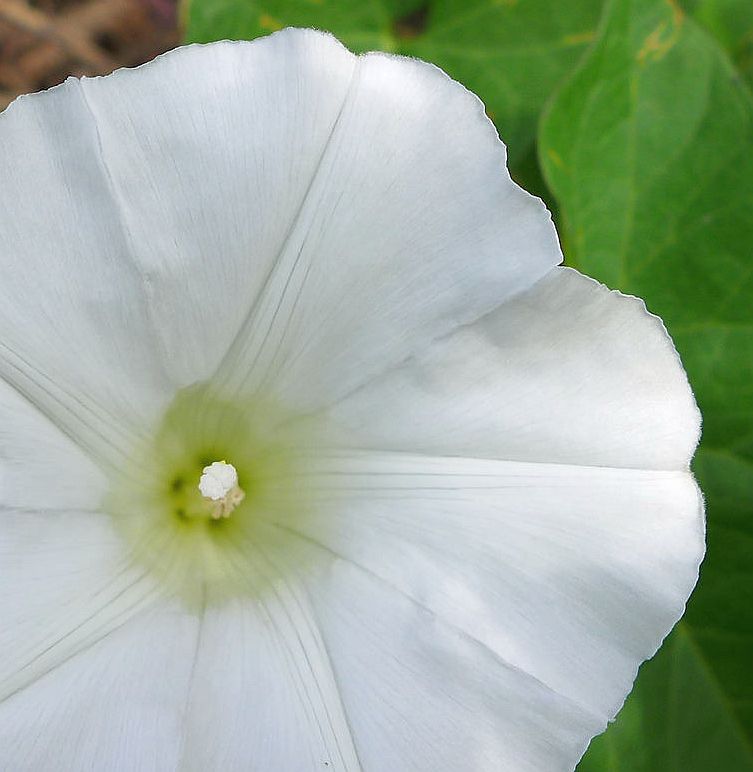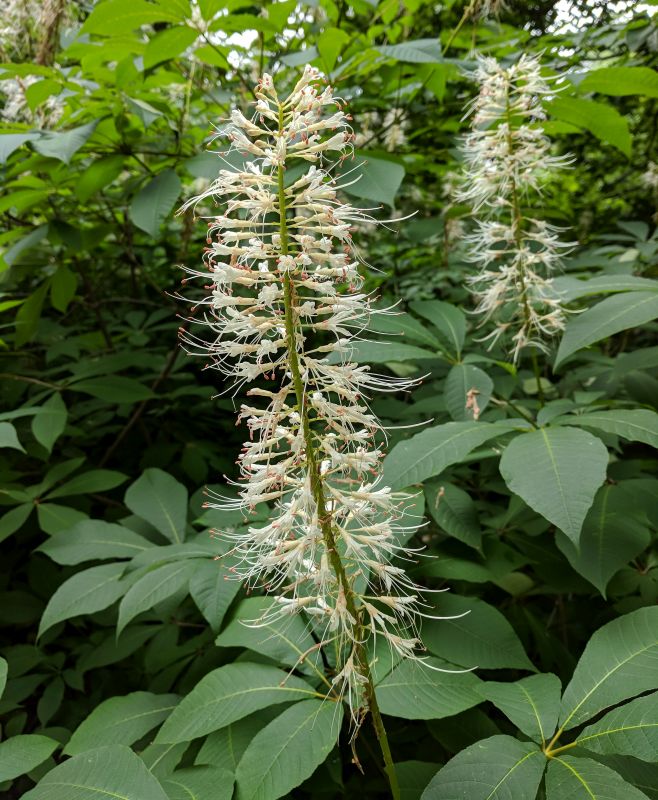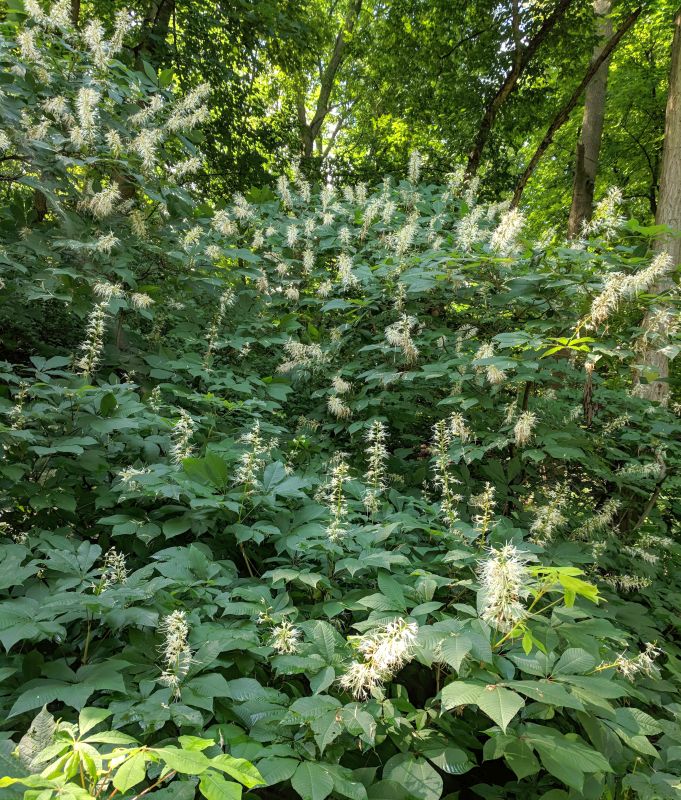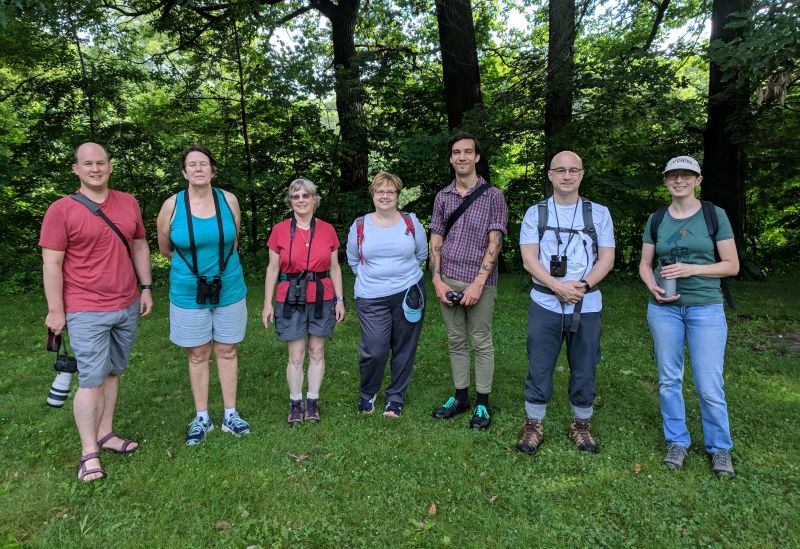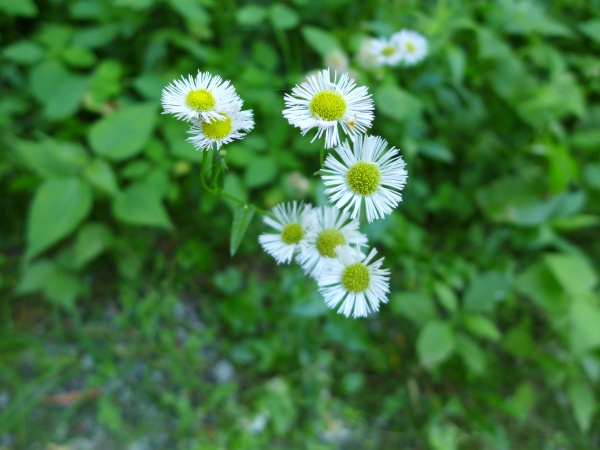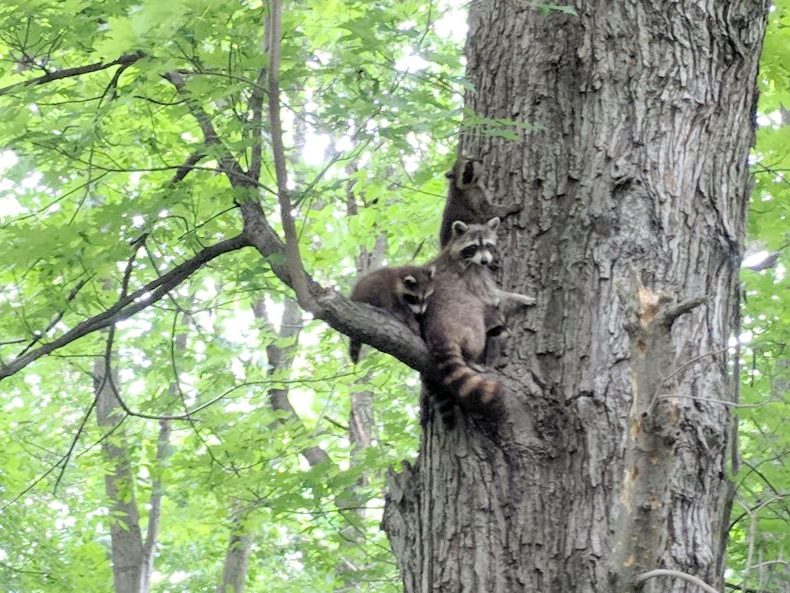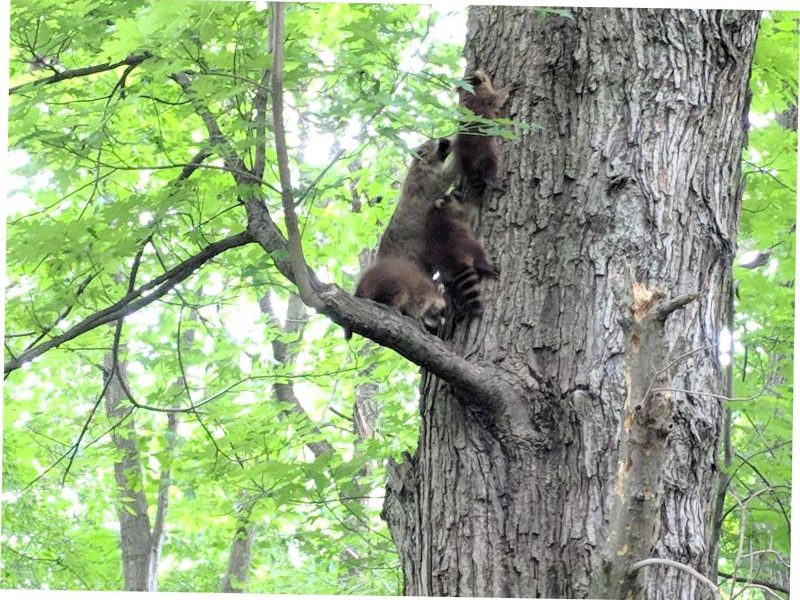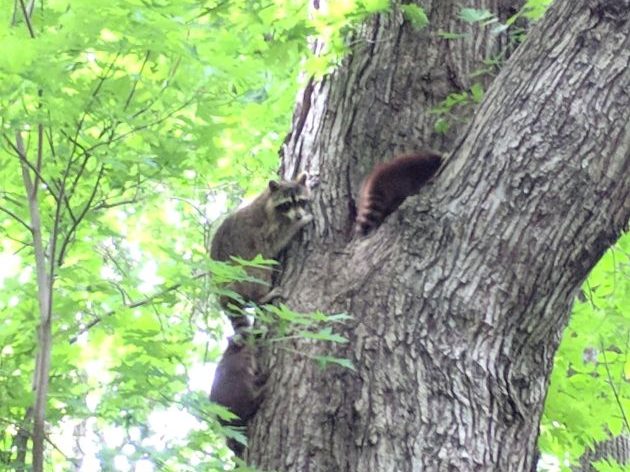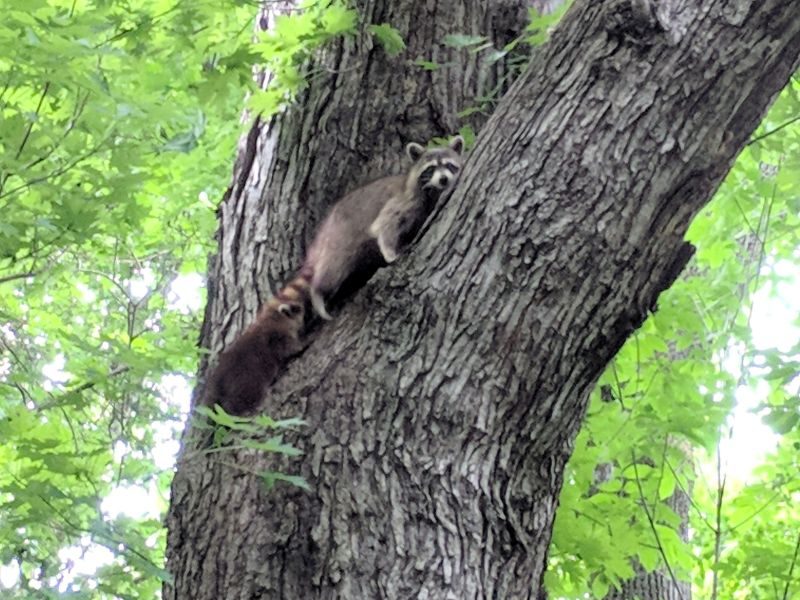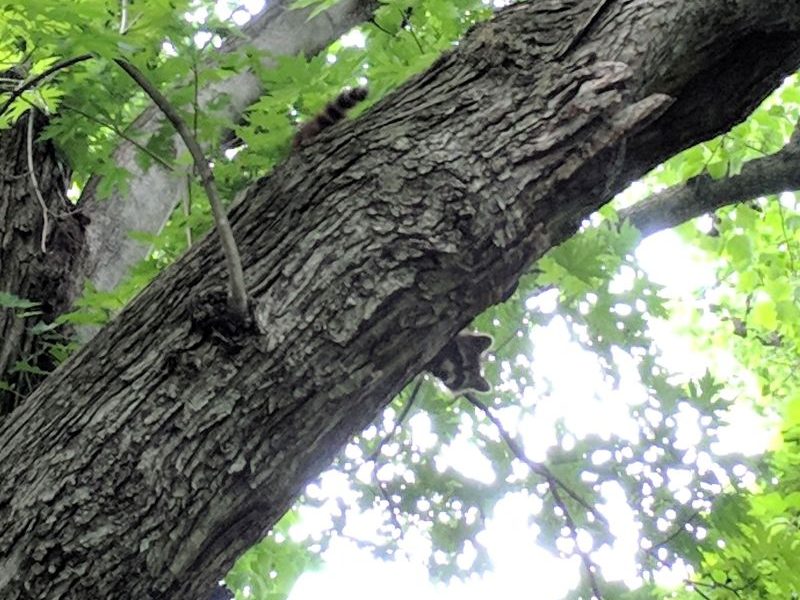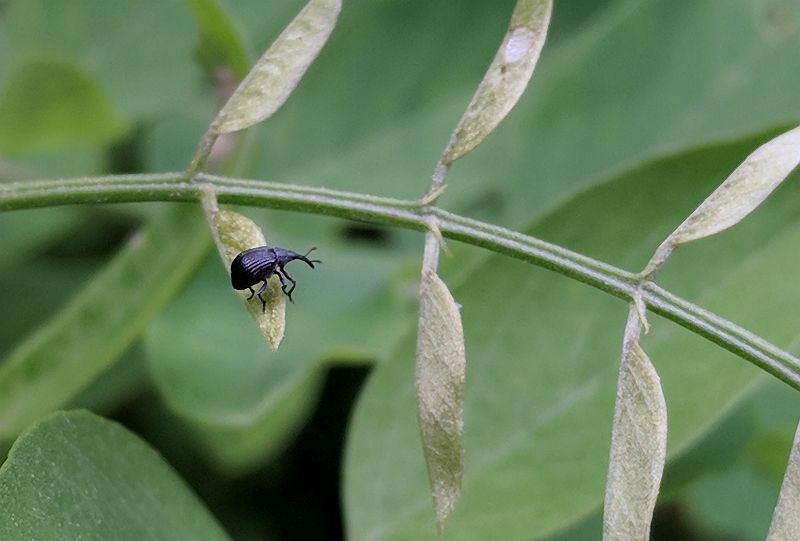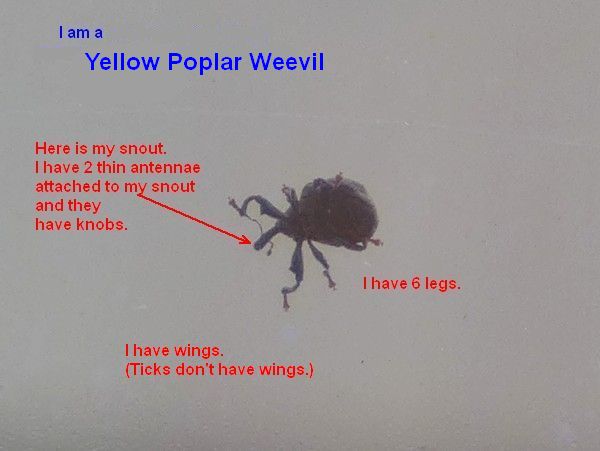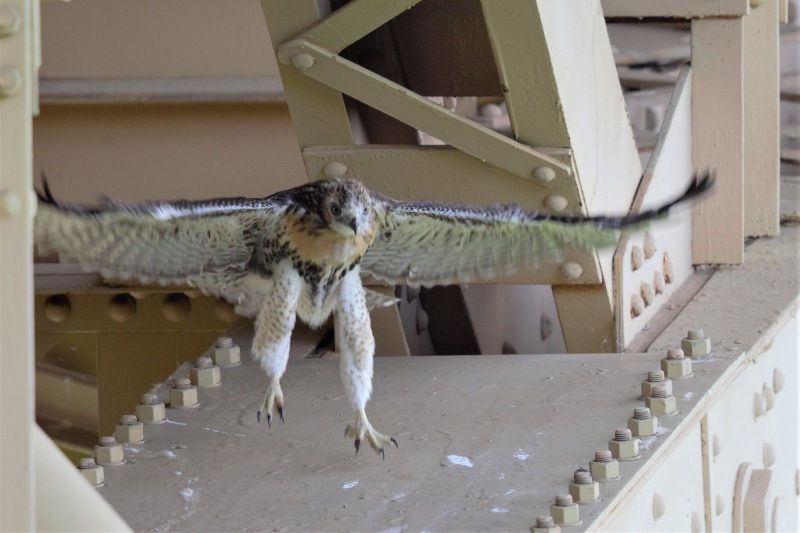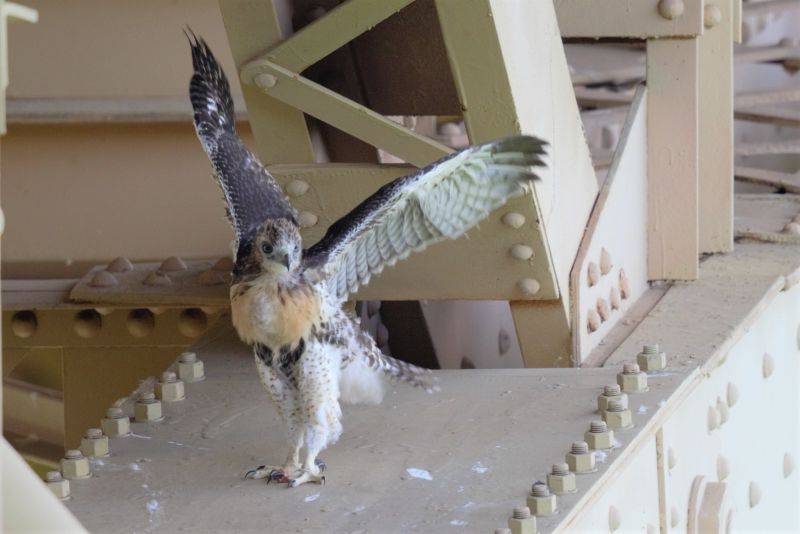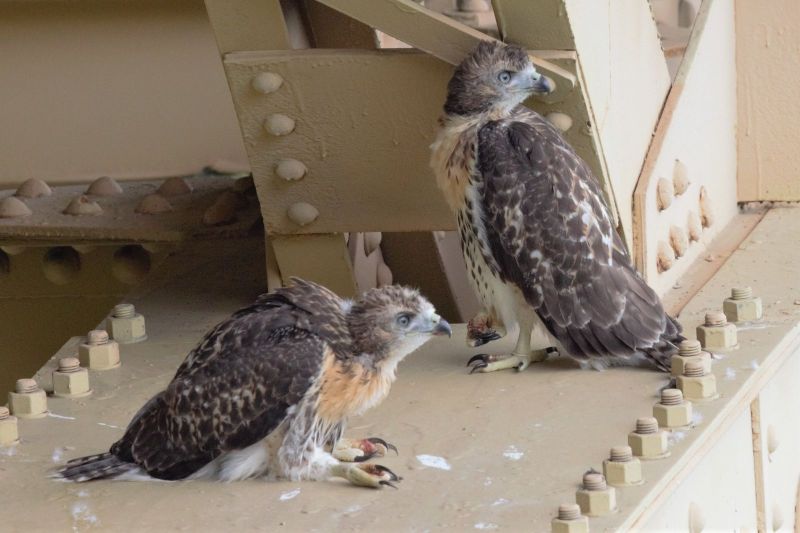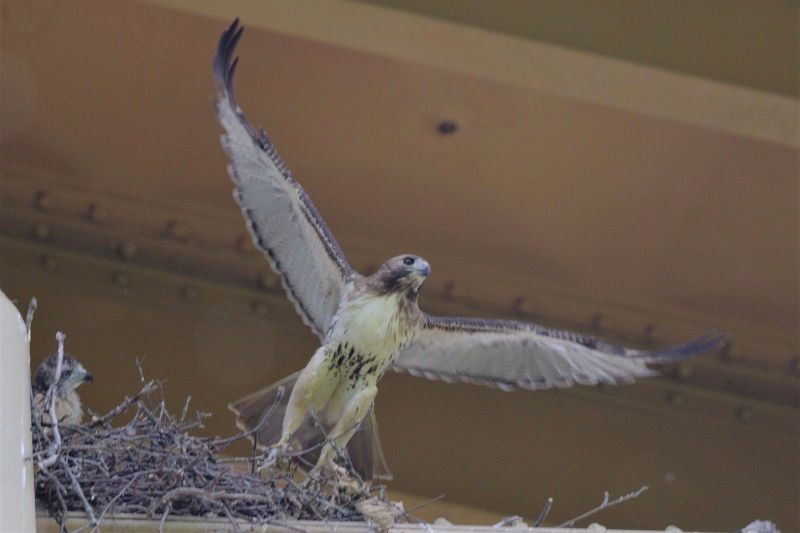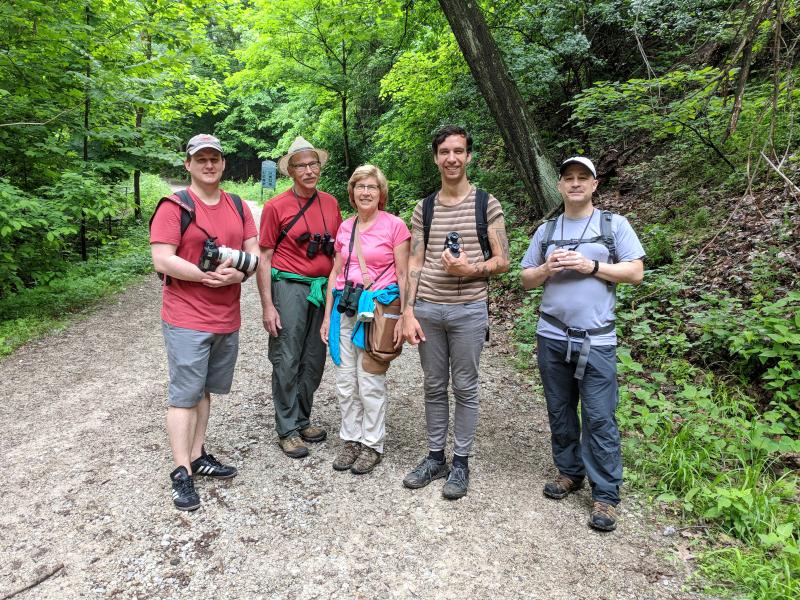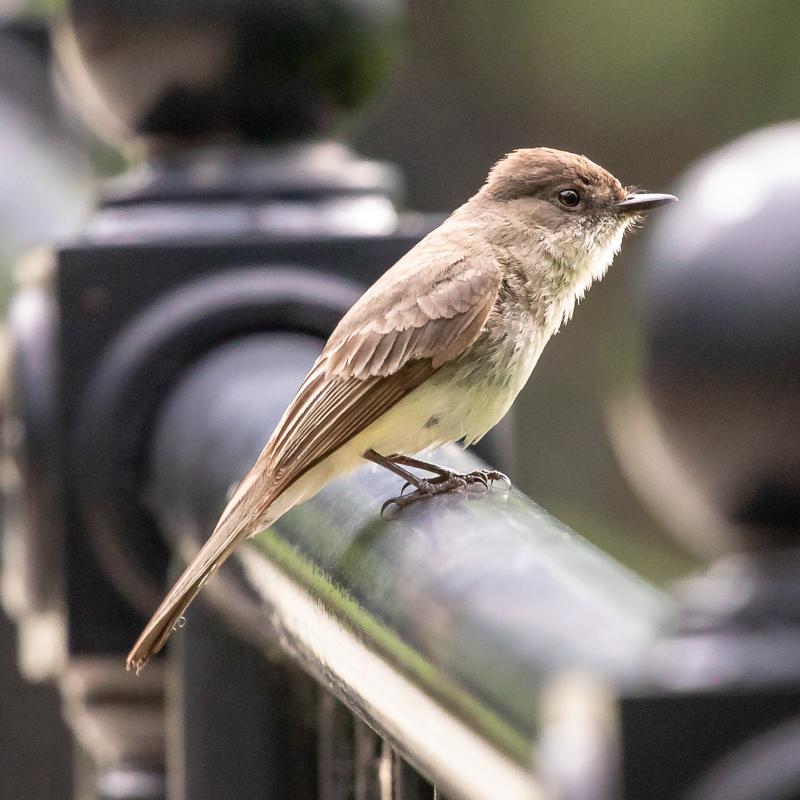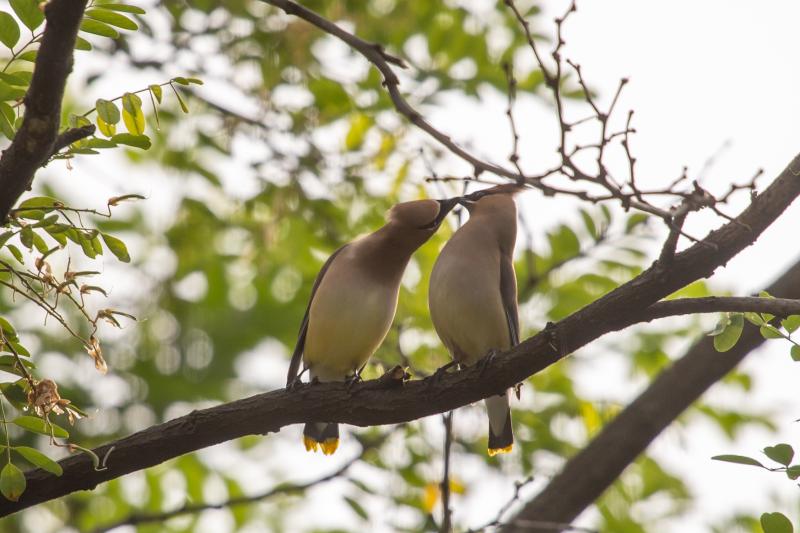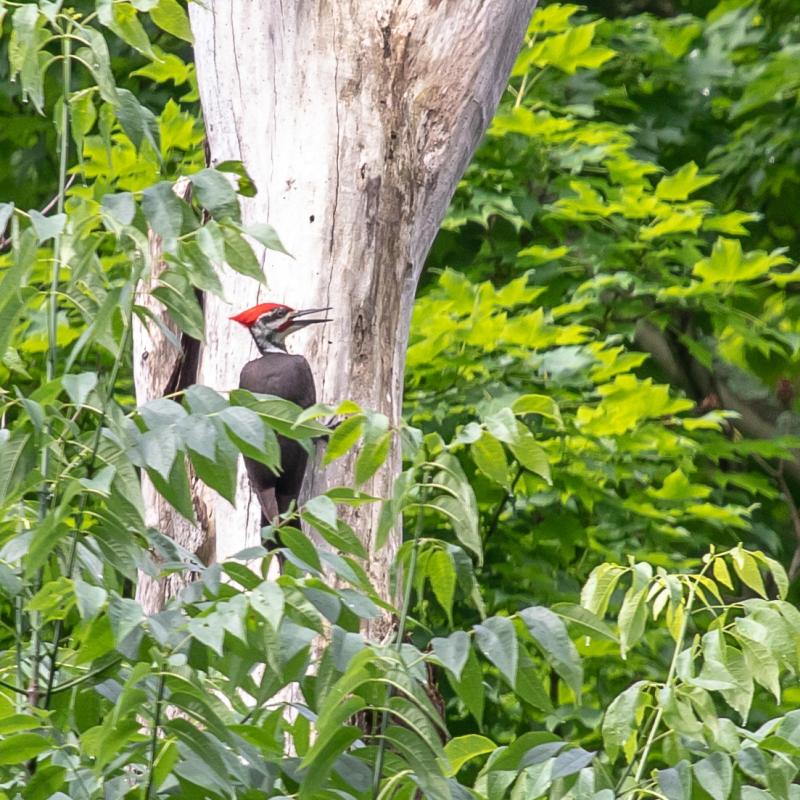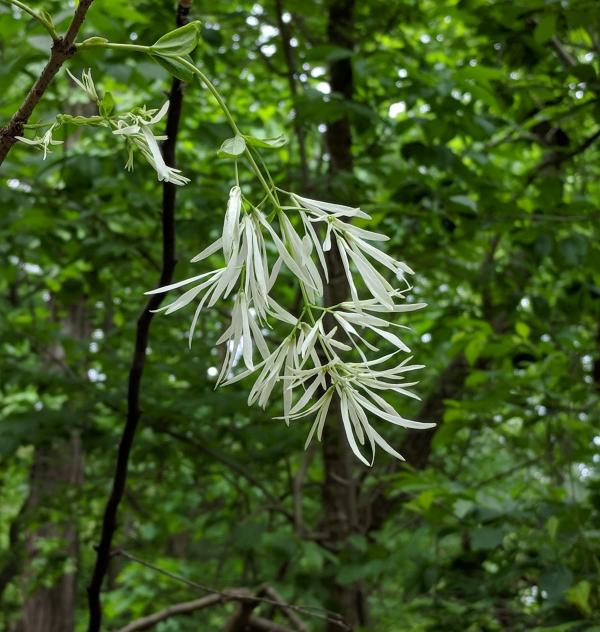
In late July, you may find nuts wrapped in papery green husks.
They’re American hazelnuts, Corylus americana, so closely related to the beaked hazel-nut Corylus cornuta that the two species can hybridize. The nut wrappers tell them apart.
The husks on C. americana’s nuts are two leaf-like bracts with ragged tips. This photo by Paul Wray at forestryimages.org shows hairy leaf bracts and an unwrapped nut.

Beaked hazel-nut (C. cornuta) husks are so long and thin that they look like beaks, as seen in this photo from forestryimages.org.
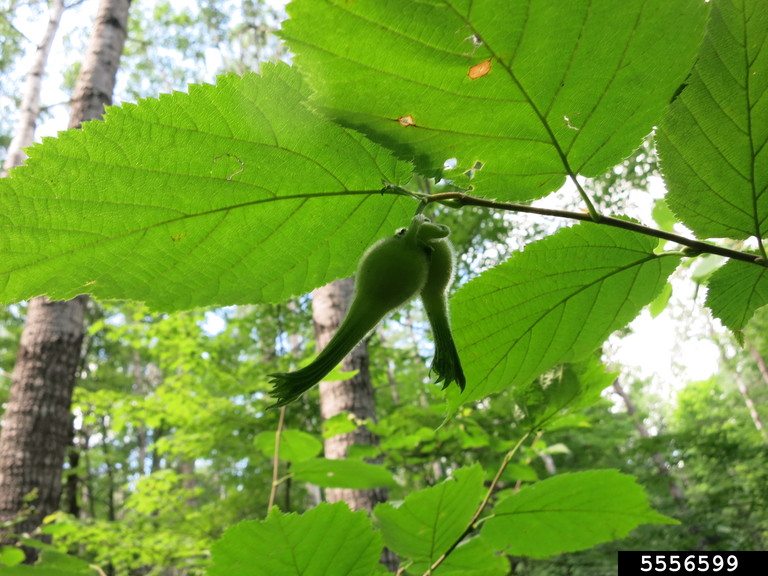
The nuts I found in Schenley Park don’t have long beaks but they aren’t quite the same as the C. americana photo above.
I wonder if they’re hybrids.
(two photos by Kate St. John. photo number 5556599 by Caleb Slemmons, National Ecological Observatory Network, at Bugwood.org)
